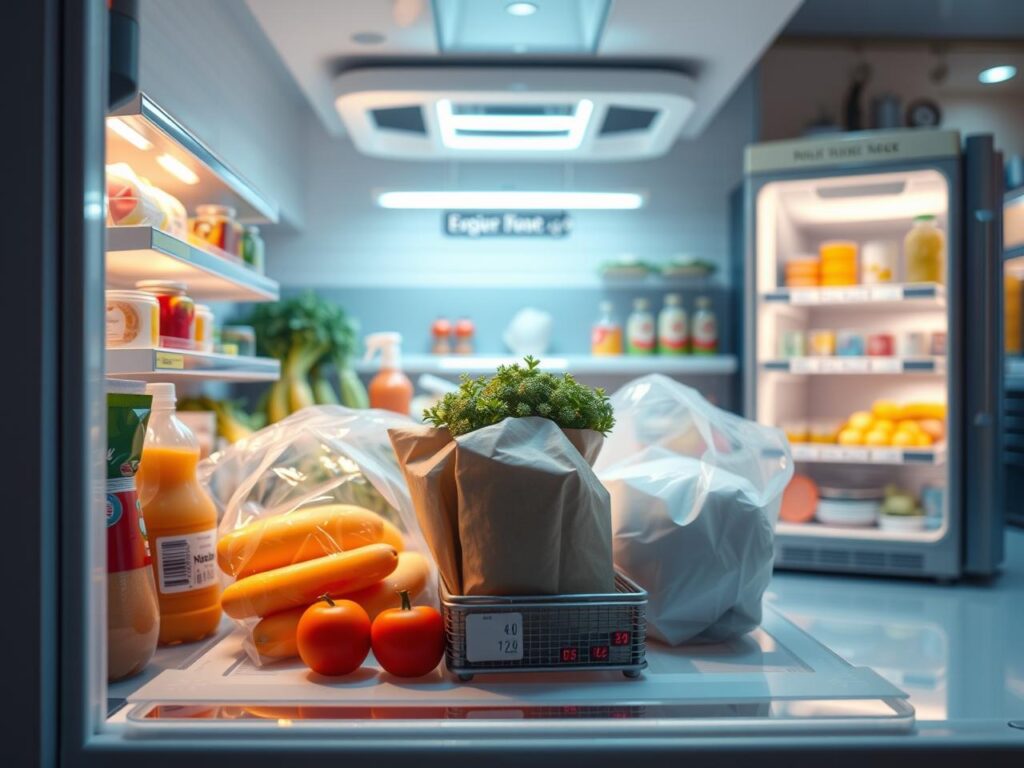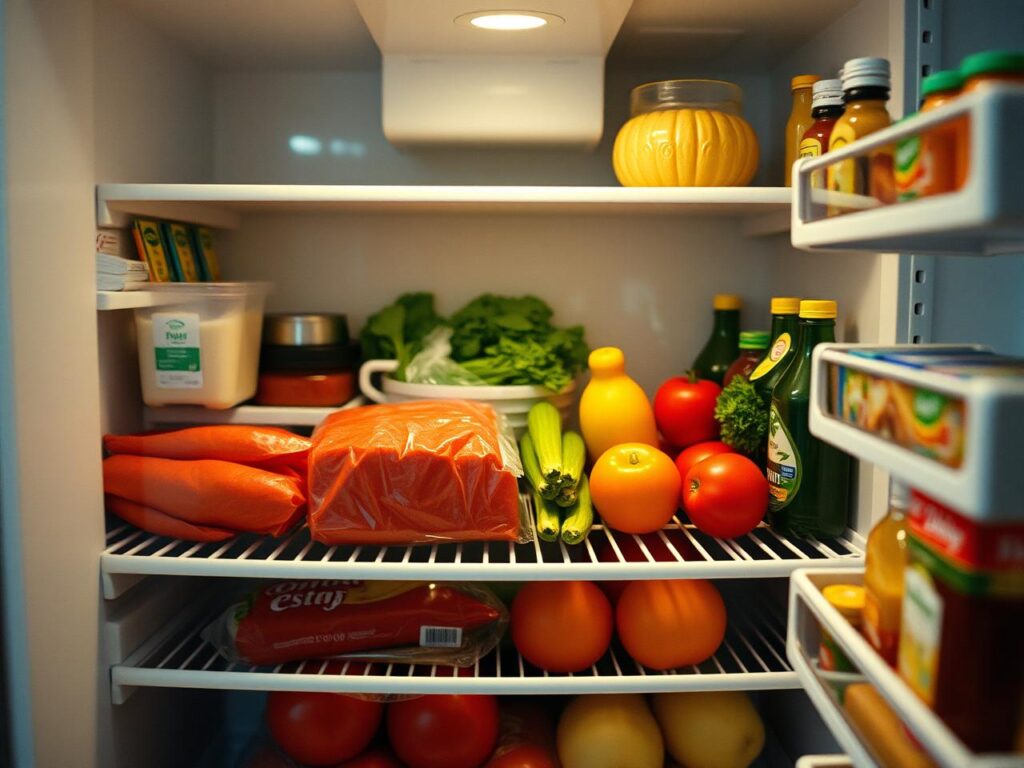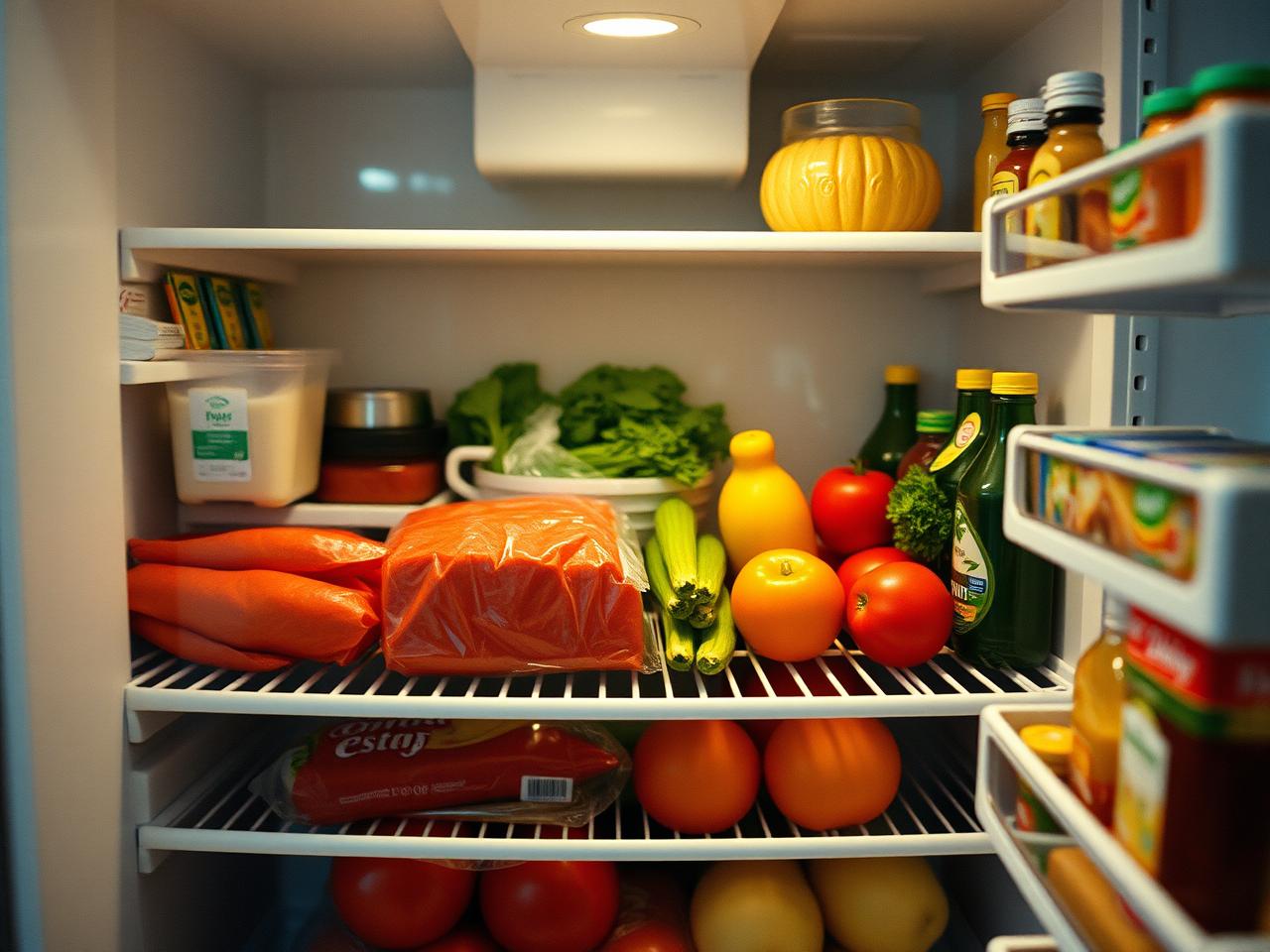Simple Tricks to Make Your Groceries Last Longer in the Fridge
Proper storage techniques are essential for maintaining the freshness and quality of food items. Temperature, humidity, and air circulation are key factors to consider when storing food. Perishable items like dairy products and meats should be refrigerated at appropriate temperatures to prevent spoilage.
Dry goods such as grains, pasta, and cereals require storage in cool, dry places to maintain freshness and prevent insect infestations. Fruits and vegetables should be kept in well-ventilated areas to control ripening. Using appropriate containers is another crucial aspect of proper food storage.
Glass or plastic containers with tight-fitting lids are ideal for storing leftovers and prepped ingredients in the refrigerator, preventing cross-contamination and extending freshness. For pantry storage, airtight containers help keep dry goods like flour, sugar, and spices fresh and pest-free. By implementing proper storage techniques, the shelf life of food items can be extended, reducing food waste.
These practices are vital for maintaining food quality and safety, whether storing perishables in the refrigerator or dry goods in the pantry. Adhering to these guidelines ensures that food remains fresh and safe for consumption.
Key Takeaways
- Store food in the proper conditions to maintain freshness and quality
- Use air-tight containers to prevent food from spoiling and to keep it fresh longer
- Understand expiration dates and how to interpret them to avoid consuming expired food
- Keep fruits and vegetables separate to prevent them from ripening or spoiling too quickly
- Use paper towels to absorb moisture and prevent food from becoming soggy or moldy
- Regularly clean and organize the fridge to maintain a hygienic and efficient storage space
- Utilize the freezer for long-term storage of food items to extend their shelf life
Utilizing Air-Tight Containers

Preserving Freshness and Flavor
Air-tight containers help to preserve the freshness and flavor of food items by preventing exposure to air and moisture. This is especially important when storing leftovers or prepped ingredients in the refrigerator, as it helps to extend their shelf life and prevent them from absorbing odors from other foods.
Organizing Your Pantry and Refrigerator
In addition to preserving freshness, air-tight containers also help to organize your pantry and refrigerator. By using clear containers with labels, you can easily see the contents of each container and keep track of expiration dates. This can help to reduce food waste by ensuring that you use up items before they expire.
Reducing Food Waste and Promoting Safety
Overall, utilizing air-tight containers is an effective way to maintain the quality and safety of your food items while also promoting organization and reducing waste. By using air-tight containers, you can help to extend the shelf life of your food items, reduce food waste, and ensure that your food remains fresh and safe to eat.
Understanding Expiration Dates

Understanding expiration dates is crucial for ensuring the safety and quality of your food items. Expiration dates indicate the last day that a product is guaranteed to be at its peak quality, but they do not necessarily mean that the product is unsafe to consume after that date. It’s important to understand the different types of expiration dates, such as “sell by,” “use by,” and “best by,” as they have different meanings.
“Sell by” dates are intended for retailers and indicate the last day that a product should be sold, while “use by” dates are recommended for consumers as the last day that a product is at its peak quality. “Best by” dates indicate the date by which a product should be consumed for optimal flavor and quality. In addition to understanding expiration dates, it’s important to use your senses to determine if a food item is still safe to consume.
For example, if a product has passed its expiration date but still looks, smells, and tastes fine, it may still be safe to eat. However, if a product shows signs of spoilage such as mold, off-putting odors, or unusual texture, it should be discarded. By understanding expiration dates and using your senses to assess food quality, you can reduce food waste while also ensuring the safety of your meals.
Understanding expiration dates is essential for maintaining the safety and quality of your food items. Different types of expiration dates have different meanings, so it’s important to know the distinctions between “sell by,” “use by,” and “best by” dates. Additionally, using your senses to assess food quality can help you determine if a product is still safe to consume after its expiration date.
Keeping Fruits and Vegetables Separate
Keeping fruits and vegetables separate is an important aspect of proper food storage. Fruits produce ethylene gas as they ripen, which can cause vegetables to spoil more quickly. To prevent this, it’s best to store fruits and vegetables in separate areas of the refrigerator or pantry.
Additionally, some fruits and vegetables are more sensitive to cold temperatures than others, so it’s important to store them at the appropriate temperature to maintain their freshness. For example, tomatoes should be stored at room temperature to prevent them from losing their flavor and texture, while leafy greens should be stored in the refrigerator to keep them crisp. By keeping fruits and vegetables separate and storing them at the appropriate temperature, you can extend their shelf life and reduce food waste.
This practice also helps to preserve the flavor and texture of each item, ensuring that they remain fresh and enjoyable to eat. Overall, keeping fruits and vegetables separate is a simple yet effective way to maintain the quality of your produce and reduce spoilage. Keeping fruits and vegetables separate is essential for maintaining their freshness and quality.
Fruits produce ethylene gas as they ripen, which can cause vegetables to spoil more quickly. By storing fruits and vegetables in separate areas of the refrigerator or pantry and at the appropriate temperature, you can extend their shelf life and reduce food waste.
Using Paper Towels to Absorb Moisture
Using paper towels to absorb moisture is a helpful technique for extending the shelf life of produce. Excess moisture can cause fruits and vegetables to spoil more quickly, so placing a layer of paper towels in the storage container can help to absorb moisture and prevent spoilage. For example, when storing washed lettuce or berries in the refrigerator, placing a paper towel in the container can help to keep them fresh for longer periods by absorbing excess moisture.
Additionally, this technique can also be used for storing herbs or mushrooms, which are prone to wilting or becoming slimy when exposed to moisture. In addition to absorbing moisture, paper towels can also help to prevent cross-contamination in the refrigerator. By placing a paper towel underneath items like raw meat or fish, you can absorb any excess juices that may leak out and prevent them from coming into contact with other foods.
This can help to maintain a clean and organized refrigerator while also ensuring food safety. Overall, using paper towels to absorb moisture is a simple yet effective way to extend the shelf life of produce and prevent cross-contamination. Using paper towels to absorb moisture is a practical technique for maintaining the freshness of produce and preventing cross-contamination in the refrigerator.
By placing a layer of paper towels in storage containers, you can absorb excess moisture that can cause fruits and vegetables to spoil more quickly. This technique is also useful for preventing cross-contamination by absorbing excess juices from raw meat or fish.
Regularly Cleaning and Organizing the Fridge
Cleaning the Fridge
By regularly cleaning shelves, drawers, and door seals with warm soapy water or a mild cleaning solution, you can prevent bacteria from spreading and ensure that your fridge remains clean and hygienic.
Organizing the Fridge
Organizing the fridge by grouping similar items together can help you keep track of what you have on hand and reduce the likelihood of forgetting about perishable items. This can help reduce food waste and ensure that you consume fresh and safe foods.
Checking for Expired Items
In addition to cleaning and organizing, it’s important to regularly check for expired or spoiled items in the fridge. Discarding any items that have passed their expiration date or show signs of spoilage can help to prevent cross-contamination and ensure that you’re consuming safe and fresh foods.
Utilizing the Freezer for Long-Term Storage
Utilizing the freezer for long-term storage is an effective way to extend the shelf life of perishable items such as meats, seafood, fruits, vegetables, and prepared meals. Freezing food items at their peak freshness helps to preserve their flavor and nutrients while preventing spoilage. When freezing foods, it’s important to use air-tight containers or freezer bags to prevent freezer burn and maintain quality.
Additionally, labeling items with the date of freezing can help you keep track of how long they’ve been stored in the freezer. In addition to preserving freshness, utilizing the freezer for long-term storage can also help reduce food waste by allowing you to save leftovers or excess produce for future use. By freezing items like soups, stews, or casseroles in portioned containers, you can have convenient meals on hand for busy days without having to worry about them spoiling.
Overall, utilizing the freezer for long-term storage is a practical way to extend the shelf life of perishable items while also reducing food waste. Utilizing the freezer for long-term storage is an effective way to extend the shelf life of perishable items while also reducing food waste. Freezing foods at their peak freshness helps preserve their flavor and nutrients while preventing spoilage.
By using air-tight containers or freezer bags and labeling items with freezing dates, you can maintain quality while keeping track of how long they’ve been stored in the freezer.
FAQs
What are some simple tricks to make groceries last longer in the fridge?
Some simple tricks to make groceries last longer in the fridge include storing fruits and vegetables separately, using airtight containers, keeping the fridge at the right temperature (around 37-40°F or 3-4°C), and properly wrapping meats and cheeses.
How can I make my fruits and vegetables last longer in the fridge?
To make fruits and vegetables last longer in the fridge, it’s important to store them in the right conditions. For example, leafy greens should be stored in airtight containers with a paper towel to absorb moisture, while fruits like apples and berries should be stored in the crisper drawer.
What is the best way to store meats and cheeses in the fridge?
Meats and cheeses should be stored in airtight containers or wrapped tightly in plastic wrap or aluminum foil to prevent air exposure and moisture loss. It’s also important to keep meats on the bottom shelf of the fridge to prevent any drips from contaminating other foods.
How can I prevent my dairy products from spoiling quickly in the fridge?
To prevent dairy products from spoiling quickly in the fridge, it’s important to keep them in the original packaging or in airtight containers. Additionally, dairy products should be stored on the middle shelf of the fridge where the temperature is most consistent.
What is the ideal temperature for a fridge to make groceries last longer?
The ideal temperature for a fridge to make groceries last longer is around 37-40°F or 3-4°C. This temperature range helps to slow down the growth of bacteria and prevent food from spoiling too quickly.






